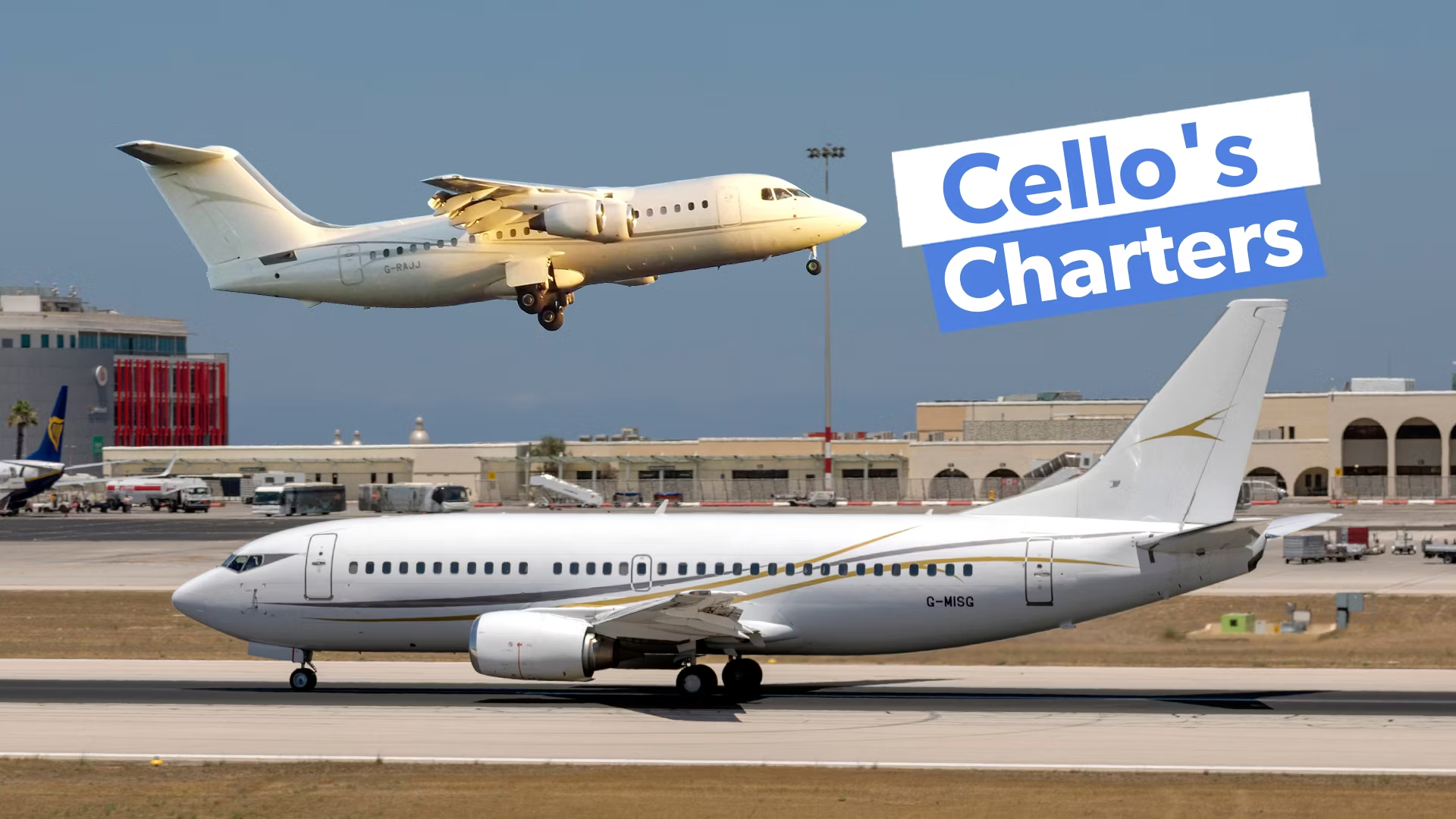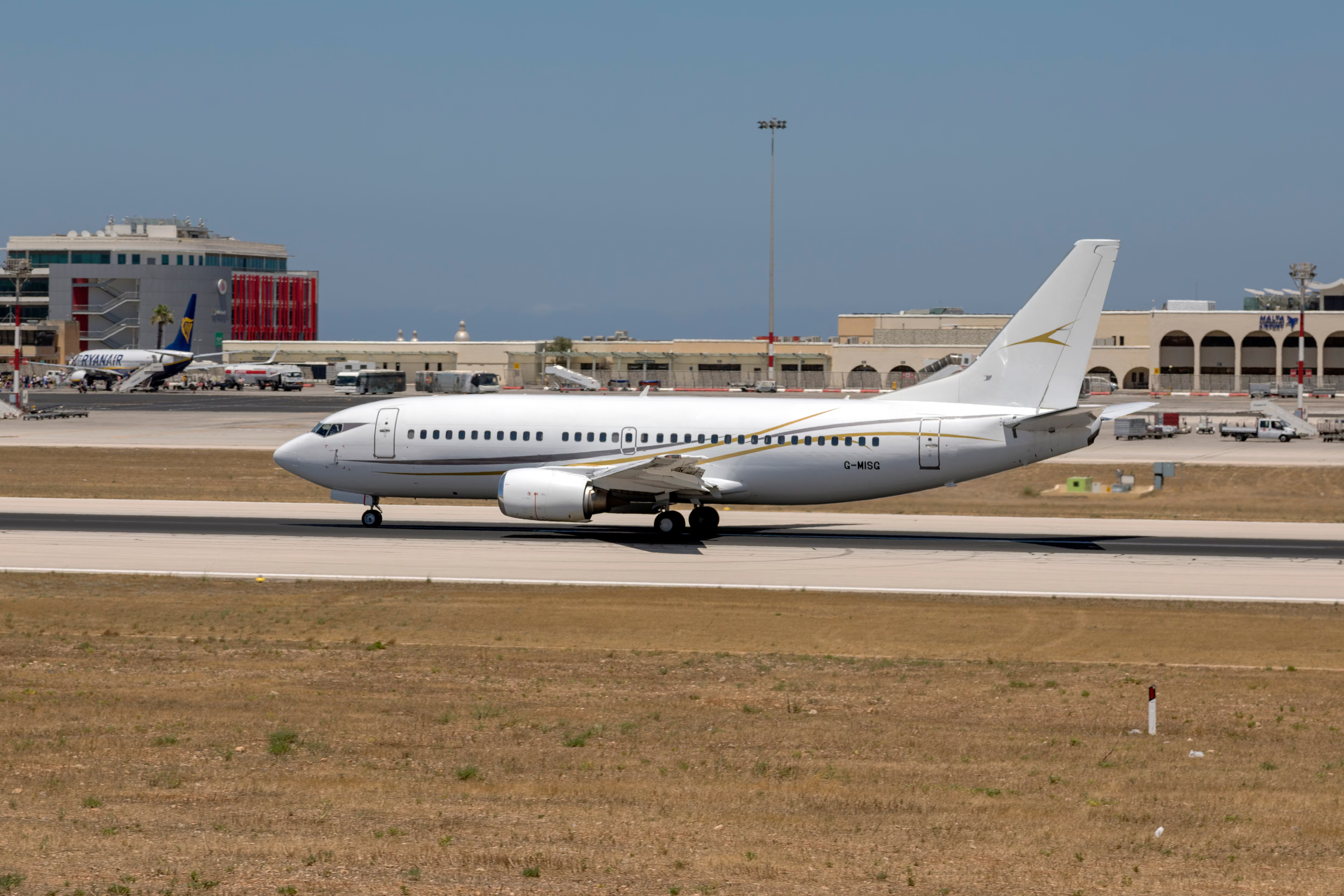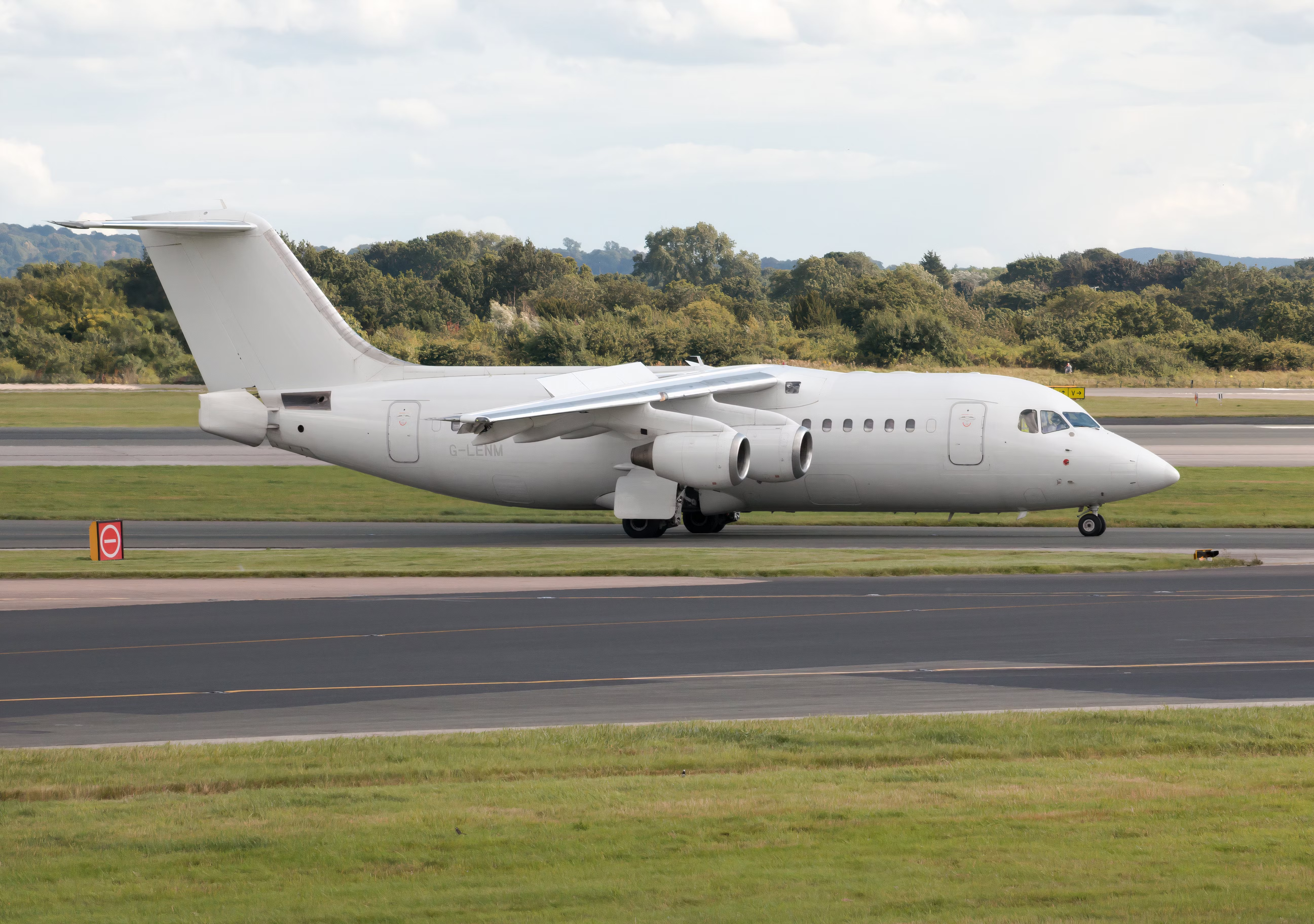Cello Aviation was founded in 2010, emerging from the rebranding of Altavia Jet Services, a company initially established as Gill Airways Limited. Its base at Birmingham Airport positioned it strategically within the UK’s aviation sector.
According to ch-aviation, Cello began its operations with a BAe 146-200 (G-RAJJ), configured in an exclusive 46-seat all-business class layout. This aircraft became the airline’s hallmark, targeting high-end clients, such as sports teams, business executives, and even Queen Elizabeth II, who flew with the airline during a historic trip to Dublin in 2011—a significant event as it marked the first state visit by a British monarch to Ireland in over 100 years.
Photo: InsectWorld | Shutterstock
To expand its capacity, Cello added a BAe Avro RJ85 in 2013, which was configured with 82 seats, allowing it to handle larger groups. This expansion helped the airline further solidify its presence in the VIP charter sector, while also exploring sub-charter and ACMI (Aircraft, Crew, Maintenance, and Insurance) opportunities.
The acquisition of Boeing aircraft
A significant milestone in Cello’s operations came in 2015 with the acquisition of a Boeing 737-400. This addition marked a shift in the airline’s capability, offering 165 seats in a flexible configuration that could cater to both business and economy class passengers.
Nim Baines, Cello Aviation’s Chief Executive, expressed the significance of acquiring this aircraft, stating, “The Boeing 737 is the most successful commercial airliner of all time… it offers flexibility and low operating costs as well as the ability if needed to fly large numbers of people in comfort considerable distances.”
According to Birmingham Airport, this expansion allowed Cello to serve longer routes, including destinations such as Turkey, North Africa, and the Canary Islands, with a range of over 2,000 nautical miles.
This Boeing aircraft added significant flexibility to Cello’s operations, allowing it to serve as both a VIP charter and an ACMI provider for other carriers, including British Airways CityFlyer and Flybe.
The introduction of the Boeing 737-400 also led to the creation of 25 new jobs in Birmingham, further anchoring the airline’s base of operations.
Business model and operations
Cello Aviation’s core business model was built around providing VIP charter services to high-profile clients. However, the airline also found success in wet-lease and sub-charter operations for airlines facing fleet shortages. This business model allowed Cello to maximize the utilization of its aircraft, particularly during off-peak charter seasons.
Photo: Jremes84 | Shutterstock
Here’s a breakdown of Cello’s primary business segments:
- VIP Charter Services: High-end clients, including government officials, sports teams, and corporate executives.
- ACMI and Wet-Lease Operations: Partnered with scheduled carriers such as HOP!, a regional subsidiary of Air France, to provide aircraft and crew on a lease basis.
- Sub-Charter Flying: Operated flights on behalf of British Airways CityFlyer and Flybe, particularly during the summer months.
According to Birmingham Airport, the versatility of Cello’s fleet, especially with the Boeing 737-400, enabled it to expand its market reach, offering both VIP luxury and cost-efficient charter services.
Financial challenges and decline
Despite its efforts to diversify and expand, Cello Aviation faced mounting financial difficulties. According to newsroom.aviator.aero, the airline reported a loss of £961,000 in the fiscal year leading up to March 2017, following a previous year’s loss of £302,000. These financial struggles stemmed from increased operational costs and fluctuating demand in the ACMI market.
On October 12, 2018, the airline officially announced its immediate closure. According to ch-aviation, Cello Aviation posted a brief message on its website, apologizing to customers and confirming the cessation of all trading activities. This closure ended all its existing contracts, including its final wet-lease agreement with HOP!.
Cello’s inability to secure additional funding in the face of growing operational losses was a key factor in its downfall. The company was officially dissolved in November 2022, despite shutting down operations back in 2018.
Fleet overview
By the time of its eventual collapse, Cello Aviation had operated a small but diverse fleet designed to meet a range of customer needs. Below is a breakdown of the airline’s key aircraft:
- BAe 146-200 (G-RAJJ): This was the first aircraft to enter Cello’s fleet in 2010. Configured with 46 business-class seats, it was tailored to meet the needs of high-profile clients, offering a luxurious experience for VIP charters, including a noted flight with Queen Elizabeth II during her 2011 state visit to Dublin.
- Avro RJ85 (G-LENM): Added in 2013, this aircraft was configured with 82 seats, enabling Cello to handle larger group charters. It was frequently used for VIP charters and ACMI operations before leaving the fleet in 2015.
- Boeing 737-300 (G-MISG): This aircraft joined Cello’s fleet in 2016 and was configured with 148 seats. It was primarily used for wet leases and full charter flights. The aircraft was retired from the fleet shortly before the airline ceased operations.
- Boeing 737-400 (G-RAJG): Introduced in 2015, this aircraft was one of the most versatile in Cello’s lineup, offering 165 seats. With its flexible configuration options and range of over 2,000 nautical miles, it allowed Cello to serve a variety of destinations including Turkey, North Africa, and the Canary Islands. The aircraft was ideal for both VIP charters and larger group operations.
|
Aircraft Type |
Configuration |
Service Period |
Notable Use Case |
|
BAe 146-200 |
46-seat VIP configuration |
2010 – 2017 |
VIP charters, including royalty |
|
BAe Avro RJ85 |
82 seats |
2013 – 2015 |
Larger group charters |
|
Boeing 737-300 |
148-seat configuration |
2016 – 2018 |
Wet-leases |
|
Boeing 737-400 |
165-seat flexible configuration |
2015 – 2018 |
Sub-charter and ACMI |
Wrapping it up
Cello Aviation’s history serves as a fascinating chapter in the UK’s charter airline industry. The airline built a niche market by balancing luxury VIP services with cost-effective ACMI and sub-charter solutions. However, as financial pressures mounted and operational costs soared, Cello Aviation was unable to secure the necessary backing to continue.
Despite its relatively short operational span, Cello leaves a legacy of offering unique high-end charter solutions and a flexible fleet that catered to a wide variety of clients. It’s a reminder that while niche markets can be profitable, long-term sustainability requires careful financial management and adaptability in an always-evolving industry.



